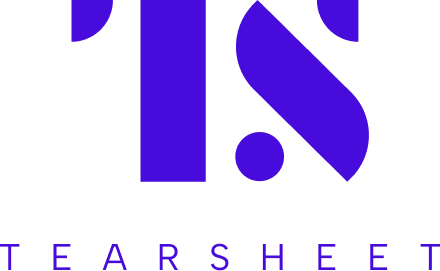AI in Action: How financial institutions are enhancing compliance with intelligent automation
- AI is impacting financial compliance, offering fresh tools for efficiency, accuracy, and fraud detection.
- Discover practical strategies for integrating AI into compliance workflows, from accelerating customer due diligence to enhancing suspicious activity reporting.

As AI’s capabilities expand, financial institutions are increasingly looking to harness its power to enhance their compliance processes. To gain insights into this rapidly evolving landscape, we spoke with Jesse Reiss, CTO and Co-Founder of Hummingbird, which provides AI-driven compliance solutions for financial institutions. Reiss shares valuable perspectives on how financial institutions, regardless of their size, can integrate AI into their regulatory compliance workflows, customizing their programs to meet unique requirements while improving efficiency and accuracy.

Throughout the interview, Reiss highlights key areas where AI is making significant impacts, including customer due diligence, document summarization, and suspicious activity reporting. He emphasizes the importance of a compliance-first approach to AI implementation, balancing the power of these new tools with the critical need for accuracy and security in handling sensitive financial data. As the financial services industry continues to grapple with evolving regulatory landscapes and increasingly sophisticated financial crimes, Reiss’s insights offer a roadmap for institutions looking to leverage AI to stay ahead of the curve.
How can financial institutions begin integrating AI into their compliance processes? Can you share a specific example where AI improved compliance efficiency, including any quantifiable benefits?
There are many opportunities for financial institutions to integrate AI. We’ve been specifically focused on three key areas:
- Customer diligence: this is a practice area with a large amount of document collection, and those documents are often very large and complex. A big part of a compliance investigator’s work is to summarize those documents, identify key facts from the documents and then populate a report with a final decision based on the risk. At Hummingbird, we’ve built a custom tool we call AI File Summarization, which allows compliance professionals to quickly summarize documents and extract elements relevant to an investigation, helping accelerate this time-consuming work.
- There’s also opportunity in validation. Many people focus on AI for its ability to generate text, images, etc., but it’s also an incredible fact-checking tool. At Hummingbird, we’re already developing a tool for SAR/STR AI narrative validation. The reports that investigators write often contain complex narratives and it’s really important that everything in those narratives be correct. AI can act as a combination editor, fact-checker, and validation layer, helping ensure accuracy.
- Finally, there are also opportunities around SAR/STR narrative generation. We’ve been experimenting with feature development in this area, but it’s also one where we know it’s important to be cautious given the prevalence of hallucinations and the criticality of narrative accuracy. Generative AI is an incredibly powerful tool, but it’s not foolproof. We’ve taken a compliance-first approach to AI feature development – we’re focused on developing features that provide the most value while meeting our incredibly high standard for safety and accuracy.
These are some of the processes which require the most human effort today so it’s no surprise we’re seeing financial institutions take advantage of these to accelerate their compliance processes.
What steps can financial institutions take to customize their compliance programs using AI? Can you provide a case study of how a client tailored their program to meet unique regulatory requirements and the outcomes they achieved?
One of the areas we’re really excited about is AI driven process automation. With compliance, processes and procedures can vary significantly across institutions, and so this process automation will require customization. To give an example, we can imagine an institution’s QA processes – as part of any suspicious activity report, they have certain checks that they want to perform to ensure high quality reports. They may want to ensure that the net activity is included in the narrative, that all subjects are mentioned, that all data match the information on file, and that the tone is professional. As we explore AI powered narrative validation, we’re exploring custom validations that can automate these quality checks and allow institutions to customize their program while ensuring high quality submissions without intensive manual effort.
File types and summarization are also important. Oftentimes, financial institutions will want specific details pulled from individual files; they’ll want to ensure that specific facts are being pulled depending on the file type. When we’re given those details by a financial institution, we’re then able to customize the prompts that will feed into our AI File Summarization. This ensures that the AI consistently delivers the facts and details that the investigator needs.
How can smaller financial institutions effectively scale their compliance operations using AI? Share an example where a smaller client saw notable improvements after implementing your AI solutions?
We work with institutions of all sizes. With our solutions, any financial institution – no matter the size – can take advantage of AI powered automation and customization. The more flexible the platform can be, and more mature the system can be for onboarding data with little to no development effort, the better opportunity for scaling across small to large clients an organization can have. While larger institutions have tech teams that may have space to build integrations or invest in their own tooling, smaller institutions often do not have that luxury. Our flexible, easy to integrate Our platform is flexible and easy to integrate so we can work with small regional banks, credit unions, and larger financial institutions to bring cutting edge AI into the compliance space.
What are the best practices for using AI to process and analyze real-time data for regulatory compliance? Describe a scenario where a client successfully utilized your AI tools to handle diverse data types and the resulting impact on their operations.
Data that’s being used by financial institutions, especially for regulatory compliance, is often very sensitive. In addition, the outcome of compliance work can have massive implications for the institution and their customers – missing ongoing criminal activity, regulatory action, or incorrectly implicating an innocent bystander. Given this, it is essential to ensure that data is handled in a secure manner and that the AI solution is engineered to optimize for accuracy. It’s also key that the AI solution is faithful – looking at all the data that’s available and not just a small subset. Finally, it’s important that AI solutions be efficient to ensure they can operate within regulatory constraints and under constrained budgets.
As an example, Stripe uses Hummingbird for their compliance investigations. Part of their compliance process involves collecting information on the subjects of the investigation – often in multiple languages. They upload those into Hummingbird and we leverage our AI features to summarize the documents, giving them massive time savings.
How can financial institutions leverage AI to improve the detection and prevention of financial crime? Provide a success story where a client saw a significant reduction in suspicious activities due to your AI tools, supported by data if possible. It’s too early for us to have statistically significant data to report. But we feel confident in saying that generative AI can help improve investigations, both by improving accuracy and accelerating compliance processes. These new tools help financial institutions quickly identify and take action against the bad actors who seek to use the financial system to engage in illicit activity. .
For context, it’s important to remember the scale of compliance operations. There’s an enormous amount of work being done at financial institutions to prevent financial crime, and any tool capable of helping accelerate existing workflows is incredibly valuable. And with more of the manual taskwork associated with compliance investigations being handled automatically, compliance investigators can spend more time on the high-value work of investigating. So there’s a huge opportunity in this acceleration – it is one of the few ways that the industry will see a significant reduction of suspicious activities in the financial world.
What future AI trends should financial institutions be aware of, and how can they prepare for these changes? Based on your insights, what steps should they take now to stay ahead, and what innovations is Hummingbird planning to introduce to support these trends?
Generative AI presents a huge opportunity for financial institutions to accelerate their work and augment their human efforts with AI. It also provides criminals with a lot of opportunity to generate fake data, fake identities, and maneuver around compliance controls. One future risk we see growing, for example, is synthetic identity fraud powered by generative AI.
All financial institutions should start upgrading their compliance tools to ensure that those tools are taking advantage of the most modern AI solutions. It’ll also be really critical that institutions are keeping their technology upgraded to stay abreast of changes as criminals become more advanced.
At Hummingbird, our software is changing constantly – we are constantly improving, launching new features every month to incorporate the most advanced tools available. In particular, we are focused on building AI solutions that support customer diligence where we will be able to identify, track, and accelerate work to identify financial crime.


